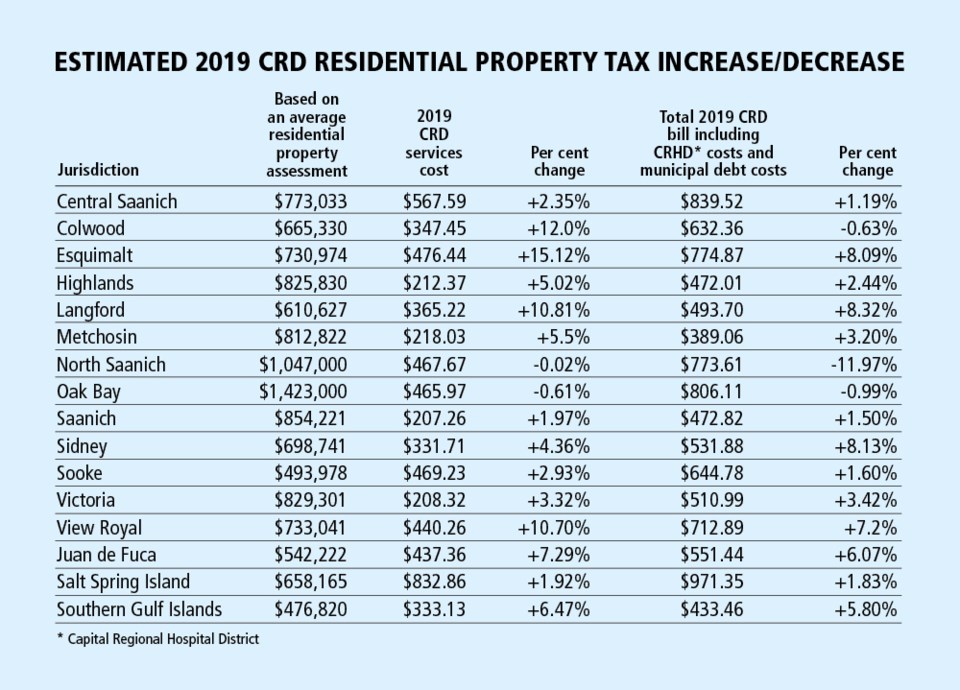Some Capital Regional District property owners will face tax increases of up to 15 per cent, while others will find tax relief in a $644-million CRD budget approved by directors on Wednesday.
The impact of the budget on homeowners depends on where you live and what CRD services your municipality participates in.
Some areas, such as Esquimalt, Colwood, View Royal and Langford, which fund the new sewage-treatment plan through tax requisitions, will see double-digit increases.
Homeowners in areas such as Oak Bay or North Saanich could see property-tax decreases for CRD services.
The CRD budget calls for spending on operations of $261.8 million, an increase of $13.4 million or 5.4 per cent over 2018, and capital spending of $382.2 million, an increase of $168.5 million or 78.8 per cent over 2018. The vast majority of the capital spending is for the regional sewage-treatment program and for the regional housing-first program, which aims to create supported and affordable units.
Limiting tax increases was made more difficult by an inflation rate in the region of about 2.4 per cent at the end of 2018, chief financial officer Nelson Chan told directors. On a $300-million operating budget, that amounts to more than $7 million, he said.
In addition, the CRD has had to absorb a four per cent increase in utility costs and faces one of the lowest unemployment rates in the country at 3.6 per cent, which presents challenges in retaining and attracting employees, he said.
Chan said the $382.2 million in capital spending by the CRD is expected to generate more than 800 new jobs in the region, and 1,100 new jobs across the province through the flow of goods and services.
The CRD’s 2019 consolidated budget is actually $818 million when operations and capital spending by the Capital Regional Hospital District ($33.4 million operations, $55.6 million capital) and the Capital Region Housing Corp. ($18.1 million operations and $65.3 million capital) are included.
“2019 is a peak year in capital construction related to the core area wastewater treatment plant, but I will say in the five-year capital plan, there’s well over $1 billion of capital investment in the region,” Chan said.
“This includes critical infrastructure projects in the CRD, health facilities in the CRHD and affordable-housing investments that will flow through the Capital Region Housing Corporation projects.”
The financial plan calls for an increase in the number of full-time equivalent staff to 609.62 from the existing 596.89. The CRD has an additional 482 auxiliary staff.




